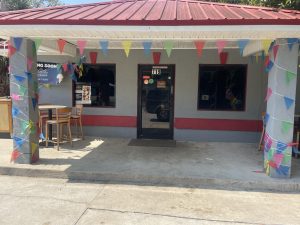GS biodiversity study identifies over 200 species on campus
October 27, 2017
A two-year study to identify vertebrate species on campus, conducted by Georgia Southern University professors and students, has come to an end.
The project titled “Georgia Southern Biological Survey,” was directed by GS biology professors Michelle Cawthorn, Ph.D., Ray Chandler, Ph.D., Lance Mcbrayer, Ph.D., and Jamie Roberts, Ph.D.
Using the help of dozens of students, they were able to catalog a list of over 200 vertebrates on campus and document where they were spotted.
The process
Lissa Leege, center for sustainability director, said, there were two phases to the project.
The first phase was documenting for all of the vertebrate species on campus.
Students and professors gathered this information through cameras, live trapping, netting and audio recording the species on our campus.
The second phase consisted of making the information available for all students on nature observation app, iNaturalist.
Leege said, the first phase of the project cost $30,200 and the second phase cost $32,572. Funding for this project was provided by student sustainability fees through the center of sustainability.
iNaturalist app
Created in 2008, iNaturalist is an app that allows users to record observations of nature, get help with identifying species, collaborate with others collecting information and access the observational data collected by iNaturalist users, according to the app’s website.
The app currently has nearly 2,800 sightings and 208 species logged for the GS campus.
Students can add to the observations by spotting animals on campus and documenting them by taking a picture and sharing the location on campus.
From this research project, GS now has one of the most comprehensive and detailed lists of vertebrates on a college campus in the nation, and is the only school in Georgia to have done this, according to GS news.
“I think it’s really beneficial to our campus as a whole just to know what we have here,” Leege said. “It’s really something that can be used as a model for other universities.”
Expanding the survey
“A logical next step is to expand the survey from campus to the city of Statesboro to help them with their environmental planning and sustainability,” Cawthorn told GS news. “We would like our campus and community to be leaders in the conservation of biodiversity.”
While Leege is not sure of whether or not this study and awareness of species on campus will affect the way the university operates, she is hopeful that the information will have a positive impact.
“That’s the ultimate goal,” she said. “You have to do a study first, now that that study has been done the information will be available.”
The Georgia Southern Biological Survey encourages any interested members of the community to get out and look for animals on the GS campus, upload observations to their project, and help GS expand their knowledge of biodiversity on the GS campus.







